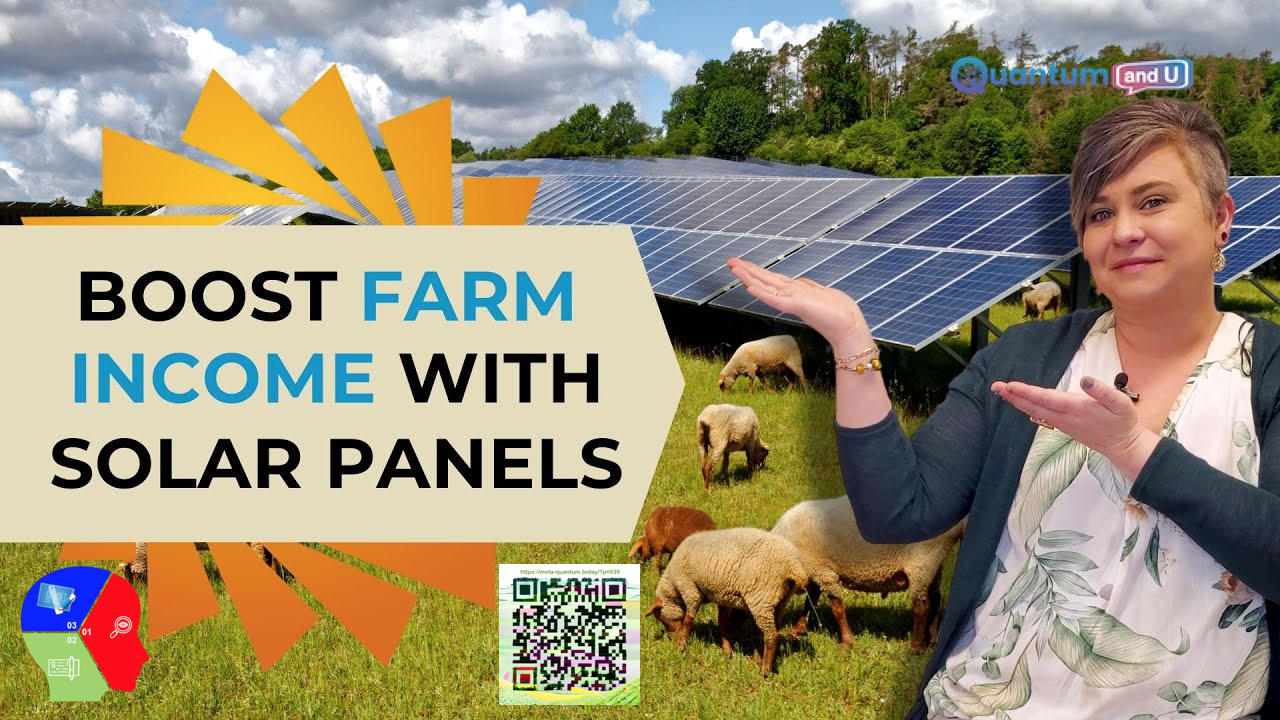
Introduction:
The YouTube review delves into agrovoltaics, the conjunction of solar energy production and conventional farming, offering a practical resolution to contemporary agricultural tribulations. This innovative approach unites solar panel deployment with underneath crop cultivation, thus augmenting land use efficiency and combating the ramifications of climate change and the supremacy of large agricultural conglomerates. Agrovoltaics serves as a safeguard against capricious weather patterns, with solar panels providing shade, modulating crop microclimate, curtailing evapotranspiration, and enhancing water efficiency, resulting in steady crop yields. It grants small-to-medium scale farmers a lifeline by endorsing land dual-use and diversifying income streams through the sale of surplus solar energy back to the grid. Agrovoltaics encourages sustainable land use, curbing solar farm encroachment onto pristine lands and preserving biodiversity. The review accentuates the benefits of agrovoltaics in mitigating climate change and challenges posed by agricultural corporations, while endorsing sustainable land use, positioning agrovoltaics as an indispensable component for the future of agriculture.
Related Sections with Detailed Explanation and Examples:
- Benefits of Agrovoltaics for Farmers and Landowners:
The review emphasizes that agrovoltaics offers financial and environmental advantages to landowners. Traditional agriculture is facing struggles due to changing weather patterns, soil degradation, and other factors. However, studies show that after installing solar panels, soil moisture increases by about 90% and water efficiency improves by nearly 330% within two years. This revitalized soil leads to opportunities for rapid growth of native plants, crops, and pollinator habitats.
Example: Solar panels installed on leased land feed electricity into the local energy grid, generating fixed rental income for the landowner. Local communities can also subscribe to the solar energy produced, reducing their electricity bills. Additionally, the landowner can subscribe to the energy generated on their parcel, further lowering their utility expenses.
- Habitat Creation for Endangered Species:
The review emphasizes the importance of pollinator habitats for successful agriculture and land stewardship. Agrovoltaics provides opportunities to create thriving habitats for pollinators, such as bees, butterflies, and birds, by planting native seed mixes alongside solar projects. This fosters a symbiotic relationship necessary for successful agricultural practices.
Example: Native Fescue plants and Rye grasses are used in Midwest solar farm projects, creating pollinator habitats without shading the solar panels. Bee colonies can also be hosted at solar sites, allowing beekeepers to sell honey and beeswax, and further promoting pollinator health.
- Vegetation Management with Grazing Animals:
The review discusses how agrovoltaics enables landowners to retire harsh chemical pesticides and fossil fuel-powered mowers for vegetation management. Grazing animals, like sheep and cattle, can be introduced into solar farms, acting as natural fertilizers and effectively controlling vegetation growth.
Example: Farmers have reported that integrating grazing animals into solar farms has helped sustain their multi-generational family-owned businesses. Grazing also allows for wool production, creating an additional revenue stream for farmers.
Conclusion:
The review concludes that agrovoltaics offers a sustainable and profitable solution for farmers and landowners, addressing challenges caused by climate change and enhancing agricultural practices. By promoting clean energy production, healthy soil, and thriving habitats for pollinators, agrovoltaics represents a win-win situation for both the environment and landowners’ financial interests.
Key Takeaway Points:
- Agrovoltaics combines solar energy production and agriculture, benefiting farmers and landowners financially and environmentally.
- Solar panels increase soil moisture and water efficiency, leading to bountiful crops and new native plant growth.
- Pollinator habitats can thrive alongside solar projects, supporting successful agriculture and land stewardship.
- Grazing animals provide a natural and cost-effective way to manage vegetation on solar farms, increasing crop production and creating additional revenue streams.
- Agrovoltaics offers a sustainable model for the long-term viability of family-owned farms.
References:
The above video information about are provided base by Pivot Energy, United Agrovoltaics, and the American Solar Grazing Association as organizations associated with agrovoltaics. For more information, viewers can visit pivotenergy.net.
Agrovoltaic Products and Services available in SEA:


